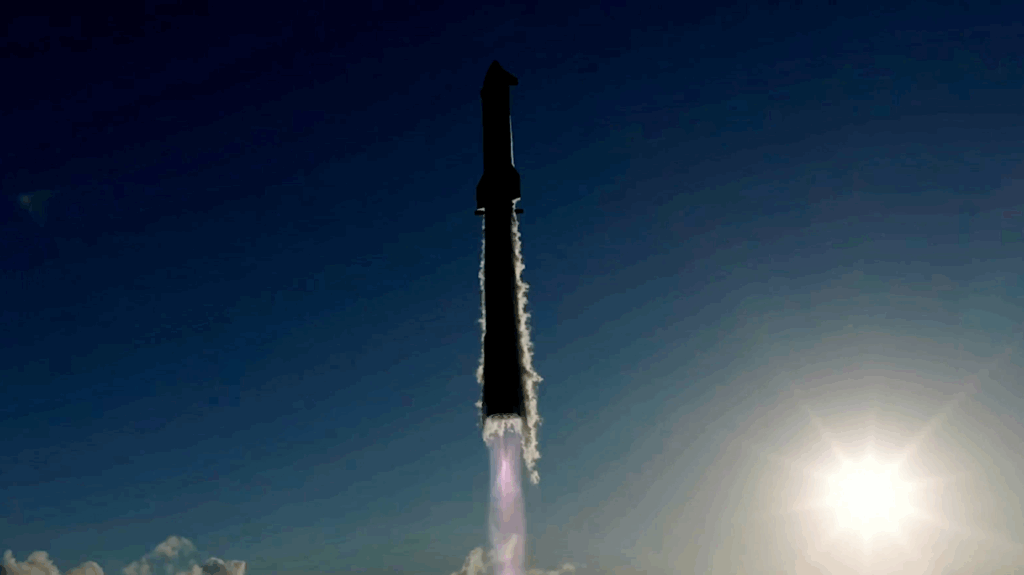JSC is Still Silent When It Comes To Their Space Drive
 Did NASA Validate an “Impossible” Space Drive? In a Word, No., Discover
Did NASA Validate an “Impossible” Space Drive? In a Word, No., Discover
“Worst of all is this statement from the paper: “Thrust was observed on both test articles, even though one of the test articles was designed with the expectation that it would not produce thrust.” In other words, the Cannae Drive worked when it was set up correctly–but it worked just as well when it was intentionally disabled set up incorrectly. Somehow the NASA researchers report this as a validation, rather than invalidation, of the device.”
Don’t Get Too Excited About NASA’s New Miracle Engine, io9
“Carroll’s final point – that the researchers measured thrust not only when the drive was configured to produce it, but also when set up to do nothing at all – may be the most important takeaway of all.”
– EMdrive tested by NASA, Reddit
– JSC’s Strange Thruster Violates The Laws of Physics, earlier post









there’s obviously nothing to say. why are you posting an update when there was nothing updated?
To report some sensible responses in other media?
By the way, Paul Gilster has a rundown as well; look for an intriguing comment to the story by someone after actually reading the paper (http://www.centauri-dreams….
hmm. sensible reporting IS rather rare, i suppose. fair point.
Wired have also made a FAQ answer to many conserns
http://www.wired.co.uk/news…
based on the full paper cited here
http://nextbigfuture.com/20…
not confirmed but far from anecdotal.
Yep, nothing to see here, move along, move along.
Cheers
I haven’t read White’s paper. The Chinese researcher’s paper is available here: http://www.emdrive.com/yang… What is interesting about their experiment and also the experiments at JSC is that both used a torsion pendulum. The British researcher, I believe, also used one. Maybe what is being produced is a torque. An energised electromagnet will produce a torque in response to the geomagnetic field. In fact any current loop will as well. But far be it for any of us to say these kinds of experiments are a waste of time. History has shown that unexpected and sometimes useful results can arise from these activities.
Admittedly I haven’t read the paper, but several friends who have pointed out that only one of the two leading theories behind this drive predicted that the “null test article” wouldn’t work–the theory being put forth by the NASA guys who did the test. The theory from the other guy doing the work said that both articles should have worked fine.
I think that people are getting confused about what was meant by “null test” in this case, because there were two competing theories.
There’s still plenty of reason to be skeptical, but these reports seem to be misunderstanding what was being tested.
At least as I understand it. Not trying to be pedantic, just that the authors did a nice job of making it confusing for the rest of us. 🙂
~Jon
Well, in looking at all this confusion, let’s also not forget that it was ol’ Dr. von Braun, who famously said:
“Research is what I’m doing when I don’t know what I’m doing.”
Somehow the NASA researchers report this as a validation, rather than invalidation, of the device.”
Its curious, for sure.
If I’ve got this right, its like saying you measured 110 volts when you stuck your multimeter in an outlet. So you hit the breakers and checked again… and somehow you’re still measuring 110.
Theory: Obviously the outlet is dead and the meter is malfunctioning. It is now safe to replace the socket (if you do this, you’re in for a bad time).
Better theory: Maybe I should check the meter on a working outlet, or get a better meter and recheck this outlet, because something is clearly not right here.
We’ve got such a weak understanding of what’s supposed to be happening that its difficult to say if the way they disabled it would have a predictable effect.
We’re in a realm of science where unpredictable could be a good thing, but the only way forward is to test until we understand what went wrong.
“We’ve got such a weak understanding”: that’s exactly correct and it’s also why this work is so intriguing.
strange that so few people understand tha the null device is testinf only the theory, while the blank device (the resistor) prove that both the Fetta and null-fetta (and the shawyer’s) version are working…
again it seems people mix between refutation of a theory and of an experimental result.
it seems also tha removing siome dielectric inside cancel the effect, which says that unlike Fetta’s theory claim, the dielectric is important.
http://www.wired.co.uk/news…
something is working.
this thing is not one of the candidate artefact cited.
no new artifact is proposed.
no theory seems satisfying.
so what ? let us experiment ?
4 experiments that works this is a conspiracy ? some says so, as usual.
I don’t like conspiracy. errors is more common, like theoretical errors when interpreting CoM. CoM is based on a structural symmetry of the physics, so my bet is more on bad interpreation, then bad measurement done 4 times.
I don’t have any position on this, but the following does occur to me. If you say that you set up an experiment in such a way that it was designed not to work, it implies that you understand how it works well enough to know what that mis-configuration would have to be. If you don’t really understand what’s going on, you can’t say that your configuration is expected not to work. You lack the information necessary to make that assertion.
Many years since I took a science course, but I do understand the idea of null hypothesis. Think of it this way: they set it up to show it wouldn’t work based ion what they thought was happening. In this scenario, any result is useful.
The universe/galaxy/solar system/cis-lunar space will never be ours if all we have is rockets. Overstatement? Yeah. Still.
Some information is here;
http://nextbigfuture.com/20…
And here: http://www.emdrive.com/yang…
The question of the “null thrust” modification is moot; whether the change in design between the two models would affect thrust was not known. The abstract is not clearly written.
More significant is
1) the assertion that a difference in group velocity would affect radiation pressure. This appears to be the basis for the postulated anomalous thrust of the frustum-shaped resonator. Group velocity is simply the rate of propagation of modulation applied to the wave. It can be equal to phase velocity, but there are numerous systems where it is not, and this is one of them. The paper presents no evidence that group velocity is related to radiation pressure, and there is no reason to think it would be. Radiation pressure is determined by photon energy, which is related to phase velocity, which is affected by the medium but not by the shape of the resonant cavity.
2) the small differences in position that were measured, <~100 microns, which could have been introduced by thermal or other effects given the rather high input energy.
Every physics experiment involves precise measurements and experimental errors, and the limited information provided doesn’t permit these to be evaluated. Without a firm theoretical basis or sufficient data on the experiment to permit duplication by other investigators it is simply not possible to make a claim that the device produces anomalous thrust. I would recommend that Dr. White simply provide additional details via the web so that other investigators could attempt to duplicate the experiment.
Folks:
The only ‘test stand’ we can really trust is the Solar System. A free flying, powered EmDrive should be placed somewhere in space, preferably far from major gravitational influence.
Until then…
tinker
The environment in free space is poorly controlled. We are not even sure of the value of gravity and the potential dark energy forces, so small accelerations would be difficult to interpret.
You’re right – deep space is uncontrolled, but I want to object to your statement that we are unsure of the “value” of gravity. we’re able to measure gravity (and its effects) very, very well. if we didn’t have a solid understand of gravity, all of our deep space probes would have been wildly off course. however, what’s less predictable are other (sometimes very subtle) effects – for example, the Pioneer Anomaly was found to be caused by radiation pressure from the heat of the RTG. that sort of thing is what makes deep space uncontrolled. the Yarkovsky or YORP effect, or Poynting–Robertson drag would, at the very least, cause severe amounts of noise in the data from a deep space test of such a small amount of thrust.
Just a reminder that there is gravity and dark energy here on earth too.
“I have this device that if it works I don’t know why, but mostly it doesn’t. I don’t really understand it. The test is too hard to do over here in the vacuum chamber in my lab. Let’s send it to interstellar space and repeat the test there to make it simpler.”
“No you can’t see my test data. Please write check”
Review committee: “we need a better understanding of the effect of dark energy and WIMPS on your particular device before we put it in space. Perhaps we can test it in another part of the Multiverse. Yes, yes… Yes… The Multiverse in that section were gravity and dark matter and energy do not exist. Here is your funding”
Well, I guess that Sonny’s work is stirring up lots of discussion and skepticism. The test device that NASA has developed to measure very small forces has been calibrated and verified over and over. It was specifically design to do this kind of engine testing. It also works in a very tight vacuum. When Sonny says it measures a force, it is accurate. As for the EMdrive, I am sure this engine was not design for the theories that Sonny is exploring. However, Sonny will test anything that happens to achieve the same kind of forces to further his research. The EMdrive is not the only outside engine ever tested. I am sure there are engines that are specifically design to test Sonny’s theory. If Sonny is right, he has found a way to push off the quantum vacuum of space like a row boat in the water. I don’t know if Eagleworks is in the same location as it was two years ago, but the room was around 20 by 20 and the cost for this work is very small. There seems to be much criticism for the little money that NASA is spending in this area. If successful, this would further our understanding of quantum space and potentially have dramatic changes for our society. This is not just about space travel(hypersonic travel across Earth could be practical if Sonny’s theories are proven along with many other design technology avenues). With the attitude of some commenters, we might as well cut off all basic government research in new areas of science. We might not have the integrated chip today if these commenters were in charge of the money in 60s.
Sonny has a PhD in Physics and has peers overseeing his work. Outsiders can still criticize, but Sonny is being very thorough in his research. I believe he has discovered a link between the gravitational constant and other basic states at the atomic level. I am being vaque because it is Sonny’s work and he needs to fully publish his theories and findings when he is ready. He just needs time to complete his testing and fully document his theories. Please give him the time. It could change everything. Even if Sonny proves his theories, the bigger question is whether we can engineer it to generate the kind of forces needed to make a multitude of devices to hardness this technology. Also, trust me that Sonny is doing a conservation of momentum assessment and his work doesn’t violate this.
I think you mean hypotheses not theories. I don’t think anyone questions the sensitivity of a torsion pendulum. What’s being questioned are the results, and that is what is supposed to happen.
I have been thinking about this and a few ideas/questions resulted:
1 – If the virtual particle “plasma” is “real” (exists within out universe), then wouldnt we need to include it as part of the “system” when thinking about conservation of momentum? If the virtual plasma IS a part of the system, then conservation of momentum MIGHT be conserved if the device were able to “push” on the plasma. Do the virtual particles take the acquired momentum with them when they go back to where they came from?
If so, wouldnt that mean that even when they are in their “virtual place” they are still part of this universe. Perhaps this is the dark matter/energy that we are looking for.
2 – The casimir effect has been well documented and the theory is applied when designing MEMs devices, so at least the effect is real. And we have created particles out of nothing by coaxing them out of the virtual plasma. This is done at extremely high energies within colliders. This is how we make anti-matter. So could the concept of the casimir effect be extended into the “Casimir Waveguide” (a term invented by myslef and a colleague over 20 years ago in college). This device would “coax” particles out of the virtual plasma using a concept similar to the casimir effect. The difference is that the gap between the plates in the casimir effect experiment would be designed to exclude all but a particular particle between the plates. By “tuning” the device, you could make a particular particle (with a particular momentum) be allowed to exist while excluding particles with different momentum. This “should” result in a net force on the waveguide. I wonder if the effect seen in the experiment discussed here is actually doing just that…
Note that as it stands, there is no such thing as a virtual plasma. So far, it’s just a made up term to explain results that aren’t fully explained. The quantum vacuum is a real thing. There are vacuum (quantum) fluctuations. Those together do not a plasma make. I, like others, await the Eagleworks group’s explanation and description of this “quantum vacuum virtual plasma.” I’m sure however that there are others, like me, that first want to see a rigorous error analysis of their work to date and their setup, a published paper (not a paper for conference proceedings) and repeatable results from others using the same setup.
has anyone actually bothered reading the paper and noticing that they did test with a null-test article (a.k.a. 50 ohm load), measured a 9.6 uN force as the base load and subtracted that from the other measurements? The two test articles were to support or disprove a hypothesis about how it worked, not as a null-test scenario.